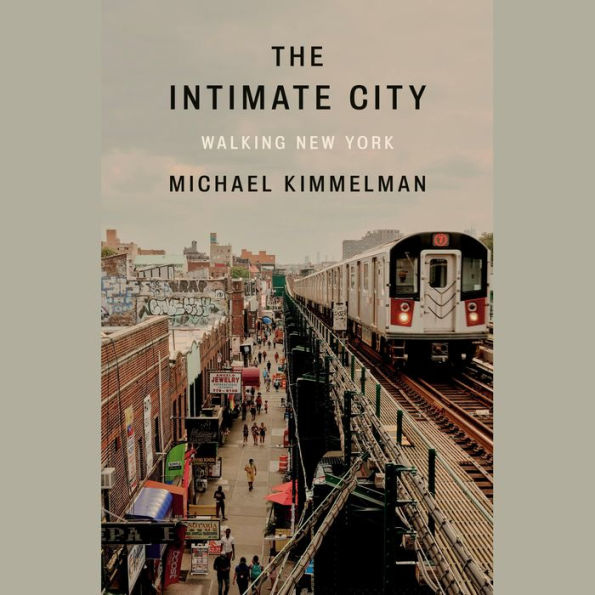Publishers Weekly
★ 07/18/2022
New York City comes alive in this scintillating collection of conversations between New York Times architecture critic Kimmelman (The Accidental Masterpiece) and architects, historians, artists, and others as they go on walking tours of 19 neighborhoods. The author and his interlocutors stroll through the bustling immigrant communities of Jackson Heights, Queens; visit the Stonewall Bar and other gay landmarks in Greenwich Village; imagine the ancient forests and streams of the pre-European “ecological wonderland” that was once the Bronx; coo over Broadway theaters; crane their necks at Midtown skyscrapers; and peer down at the brickwork of an Upper East Side street. Illustrated with vibrant color photos, Kimmelman’s loose-jointed text and dialogues oscillate between beguiling lore—Sands Street “used to be a dense, vibrant, diverse street teeming with sailors... packed with stores, barber shops, cafés, bars, restaurants, gambling dens, tattoo parlors, and brothels”—and piquant evocations of the New Yorkish soul (“I would join my father to check in on his surgical patients at his hospital on 14th Street before he and I meandered slowly back through the Village streets, Dad musing on his days traveling with the Freedom Riders, dreams for a communist future, and whether the Times was run by the CIA”). The result is an enchanting and lyrical montage of an ever-evolving city. (Nov.)
From the Publisher
‘The Intimate City’ is a joyful miscellany of people seeing things in the urban landscape, the streets alive with remembrances and ideas even when those streets are relatively empty of people.”—Robert Sullivan, New York Times Book Review
"A surprisingly uplifting time capsule and a new kind of love letter to the city seen through the eyes of those who know it intimately."—Good Housekeeping
“New York City comes alive in this scintillating collection of conversations between New York Times architecture critic Kimmelman . . . An enchanting and lyrical montage of an ever-evolving city.” —Publishers Weekly (starred review)
“A rich tapestry of architecture, urban living, and civic resilience . . . Throughout, the author and his guides never lose sight of the people who live and work in these communities. Fascinating historical facts abound . . . An important book for readers interested in understanding New York through its architecture.” —Kirkus
Library Journal
09/01/2022
In 20 unnumbered chapters, New York Times architecture critic Kimmelman (Portraits: Talking with Artists at the Met, the Modern, the Louvre and Elsewhere) extols the pleasures of walking and records exchanges in four of New York City's five boroughs (Staten Island is discussed only from a distance) with a constellation of urban specialists. The author pairs himself with experts for geological, topographical, and architectural explorations from Lower Manhattan's Whitehall Terminal to the Bronx. Motivated by the isolating effect of COVID and inspired by Myra Hess's consoling outdoor piano concerts during the air raids of World War II, Kimmelman characterizes his book as a collective diary, a mental atlas, and the work of an urban epicure (the flâneur). Complementary to Michael Sorkin's Twenty Minutes in Manhattan but less exclusively architectural in focus, the book's chapters each begin with a short history of the neighborhood and an introduction to Kimmelman's cicerone, or tour guide. VERDICT With interviews often meandering into the overly personal and with incidental-seeming uncaptioned photographs (their compelling views and dramatic cropping notwithstanding), this book would be more rewarding as a series of video tours.—Paul Glassman
Kirkus Reviews
2022-06-25
Twenty tours through New York City reveal a rich tapestry of architecture, urban living, and civic resilience.
New York Times architecture critic Kimmelman originally published 17 of these 20 essays in the Times between March and December 2020. “The walks would become my own way of coping with those first months of the pandemic,” he writes at the beginning of this lively book, which includes excellent photos. His tours around the city were led by architects, historians, and preservationists. Many were conducted virtually, but all can be strolled in person, book in hand. We get street-level views of the culturally diverse neighborhoods of Jackson Heights and Forest Hills; "America's first commuter suburb," Brooklyn Heights; and "the fountainhead of American bohemia," Greenwich Village. Kimmelman also devotes tours to specific streets (42nd Street) and buildings (Rockefeller Center, “New York’s Depression-era version of the pyramids…the largest private construction project in America between the World Wars”). Throughout, the author and his guides never lose sight of the people who live and work in these communities. Fascinating historical facts abound. In each one of New York's Chinatowns, for example, there is a park where the elderly can go for “fresh air and ‘san san bu,’ leisurely walks.” The East Village still shows signs of the Yiddish Theatre District of the early 20th century. The National Registry listing for the Stonewall Inn, site of a famous gay uprising, was achieved using criteria drawn for Civil War battlefields. In Harlem, architect David Adjaye demonstrates how to read the district's layers of history, architecturally: "If we walk north, through Marcus Garvey Park, along 127th Street, you'll see what I mean—houses from the 1850s to the early 1920s, which go from Romantic Classicism to Art Deco, brownstone to stucco." Adjaye's words about Harlem apply to this entire book: "Architecture is about more than shelter, after all. It’s about doing something that gives people dignity, hope, a belief in the future.”
An important book for readers interested in understanding New York through its architecture.



